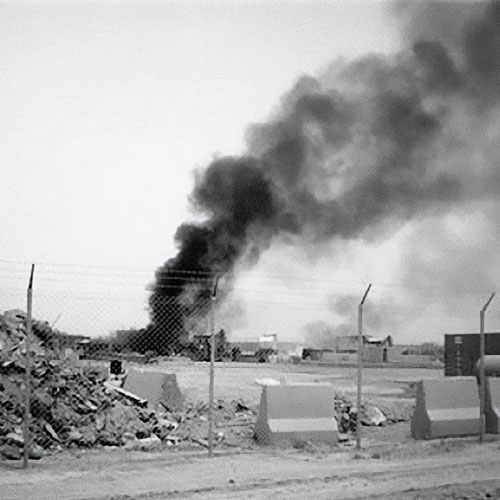Going green takes time.
As recently as 1985, for instance, Americans only recycled about 10 percent of their garbage. It was a bad scene. Even worse, the number of landfills in the country was rapidly shrinking, as old dumps closed and not enough new ones were being set up to replace them. A crisis, it seemed, was imminent. And that posed unique (and uniquely gross) problems for those areas of the country running out of places at which to unload their trash.
Enter the Mobro 4000.
The Mobro was a barge, brought in to carry tons of trash from the Long Island town of Islip, whose landfill was nearly full, and float it down the coast to comparatively roomier dumps in the South. The idea was a pilot project, dreamed up by Alabama businessman Lowell Harrison, meant to benefit both sides: Islip would get rid of six million pounds of garbage in one fell swoop, while the Southern dumps would get cash, as well as an early experiment in renewable energy, by generating electricity from the methane gas produced as the trash decomposed.
Harrison got the owner of the only dock in New York City licensed to ship garbage involved, and together they secured investors, like the mob boss Salvatore Avellino. All appeared to be well. The Mobro 4000 left port on March 22, 1987, pulled by the tugboat Break of Dawn, and headed south.
But by the time the barge pulled into Morehead City, North Carolina, on April 1, there was a problem. A local TV crew had drawn the public’s attention to the matter, and suddenly the battle lines of City vs. Country were redrawn.
“No one said ‘a bargeload of waste,’” Harrison later said of the media coverage. “It was ‘a bargeload of New York waste’!” Then a government official spotted a bedpan amidst the trash, which led to fears that there might be other, more hazardous hospital waste onboard.
At this point, word of a homeless, floating mound of garbage went national. Nightly newscasts across America were suddenly full of images of the Mobro as it tried its luck up and down the East Coast, with vivid descriptions of its cargo “dripping brown ooze” as it sat onboard, rotting and fully exposed to the elements. After Louisiana, the barge tried its luck across the Gulf in Mexico, and then further south in Belize. For a time it sat anchored a few miles off the coast of Key West, Florida. But nobody wanted it.
In May, the Mobro returned to New York. But a pair of court orders once again blocked it from being unloaded. Even back in the trash pile’s home state, it was a quagmire that no politician wanted to be associated with. Finally, more than five months after first leaving port, a judge ruled that the Mobro’s trash was to be burned in a Brooklyn incinerator — where it was found to contain (surprise!) mostly scrap paper — and then returned to the very same place it originated from: Islip, Long Island.
At the time, the odyssey of the Mobro was seen as a face-slappingly obvious symbol of the garbage crisis facing America in the 1980s. It was also used as a rallying cry for the burgeoning environmentalist movement; at one point Greenpeace activists hung a banner off the side of the trash that read “Next time…try recycling.” And it seemed to work, too. Remember that dismal national recycling rate of 10 percent in 1985? It jumped to 16 percent in 1990, and then to 25.7 percent in 1995, thanks in part to awareness created by stories like the Mobro’s.
Looking back, however, the legacy is more complicated. Derided at the time, Harrison’s plan to move excess garbage across state lines is now standard practice; according to one expert, New York City now sends out the equivalent of seven Mobros’ worth of garbage every day. And his idea to use trash as a source of renewable energy now seems downright visionary, with more than 600 landfill gas projects currently in operation across the U.S. Even the panic about a lack of landfill space turned out to be overblown, as those outdated municipal dumps were in fact being replaced by far larger, regional ones.
But at the time, it was simply too hard for anyone — politicians, environmentalists, or the general public — to look at a garbage barge, dripping ooze, and see a good-news story floating their way.



















